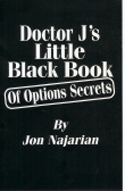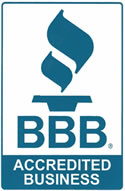.jpg)
Follow
Us:    
|
First, on Thursday, February 16th at 11:00 am ET, Chris Verhaegh invites you to join a free webinar as he covers The Setups I Use to Make Money in the Markets. This hour-long presentation is on Pulse Options Secrets for Trading Weekly Options.
You still have time...
Join Today!
This totally FREE, live instructional event was created to give you the opportunity to learn the setups that Chris and four (4) other experienced traders use to consistently find high probability trading opportunities - and to answer your burning questions!
As you can imagine, a free webinar about how traders make money in the markets will fill up quickly...
Sign Up Here Now
While there are still spots left!
Next, Chuck Hughes has contributed a chapter to a new eBook that has just been made available: High Probability Market Setups. His chapter is about using Keltner Channels to identify high-probability entries and exits.
You not only get free, unfettered access to Chuck’s chapter in the eBook… but eight (8) other chapters too! Those chapters are written by trading veterans that include multiple strategies and indicators they love that you can learn and apply to your portfolio.
This eBook is totally FREE to you! But it won’t be around forever, so take a minute to register to receive it: Click Here Now.

|
|
After a very brief stint with the Chicago Bears in 1981, Jon Najarian came to the trading pits of Chicago to make his fortune. After 23 years, he's still here, in an industry where the average career is measured in months, not years! Doctor J's success in the pit led him to found Mercury Trading in 1989, a proprietary trading firm that makes markets in more than 100 high-tech and biotech stocks and single stock futures at the CBOE, trading between 25,000 - 40,000 options and up to 3 million shares of stock per day!
Since 1994, Doctor J has been a business correspondent for FOX television and appears three times daily on FOX TV's "FOX News in the Morning". Doctor J is also the host of the CBS radio show, "Taking Care of Business with Doctor J", which is carried in Chicago and reaches 38 states. His market observations are broadcast to 180 markets daily on firstbusiness.us, a business news magazine that airs on CBS, NBC, FOX and ABC affiliates across the country.
 |
Doctor J's Little Black Book
of Options Secrets

Jon is a noted options expert, having appeared in the Wall Street Journal, Barron's Chicago Tribune, USA Today, Business Week, Futures Magazine, Institutional Investor, etc.
He has served on the board of the Chicago Board Options Exchange (CBOE) and is widely considered one of the most powerful and influential options traders in the world today.
This report contains a number of proven-in-the-market techniques and strategies for trading options. For a more comprehensive examination of his trading strategies, please consult Jon's full-length hardcover book, How I Trade Options.
Learn More About
Dr J's Little Black Book
|
|

Better
Business Bureau
 |
|
Click on authors name
to learn more
|
| |
|
|
Inside Trading brings you Jon Najarian, who explains how to benefit from playing the short side of the market.
Next, Lee Gettess provides us with his S&P and bond market predictions for the coming week.
Keith Cotterill authors the following article about buying and selling a futures contract.
Last, Chuck Hughes presents his Guaranteed Real Optioneering Winners - Optioneering Newsletter.
Enjoy!
Adrienne LaVigne
TradeWins Publishing
 |
|
The Short Side
by
Jon Najarian
The following
is an excerpt from Jon Najarian's Dr J's Little Black Book
It is possible to play the short side of the market when you’re bearish on a stock, betting that the market will decline, or simply to protect your holdings, whether they are individual stocks or mutual funds. This strategy is called the Put Spread.
Let’s say you’ve selected a stock after doing your homework, and you decide that the odds of the stock trading lower are greater than the odds of it trading higher. One way to play your hunch would be to buy a put spread. When buying a put spread, you lock both the maximum loss and the profit potential. For example, on a 10-point put spread, the most you can lose is the amount you paid for the put spread. But, the potential profit is the amount paid subtracted from the strike price differential.
For instance, if you paid $2.75 a share for a 10-point put spread, the maximum profit would be $10 minus $2.75, or $7.25 per spread. Ideally, you want to have at least a 2-to-1 ratio. That means for the times that you are right, you’re going to be rewarded at least twice as much as the amount you would lose when you’re wrong. Adhering to this kind of ratio is the essence of risk control and money management.
Here’s an example of how a put spread works: Let’s say eBay is trading at $150 a share. You decide to buy the $150 put and sell the $140 put, for a $10 spread. If you pay $9 for the $150 put and sell the $140 put for $6.50, you would pay a net of $2.50 for a 10-point spread. For one contract (equivalent to 100 shares), you would pay $250 per spread, which is also the maximum loss, and stand to reap a maximum profit of $750 per spread.
Now, even if eBay went to $200 a share – the exact opposite of what you wanted to happen – you would still lose only $250. Overall, you are risking $250 to make $750 per spread, which is a three-to-one reward/risk ratio; which I would consider to be great odds in my favor. And you are controlling the downside of what is otherwise a very volatile stock, which could be hard to borrow if you wanted to short it. At the same time, you’d be in a position to profit handsomely if the stock trades the way you think it would and declines in price.
If eBay declines to $130 a share, you make a $20 profit on the $150 put, minus the $9 premium for a net profit of $11 a share. The $140 put you sold is exercised, requiring you to buy stock for $140 when the stock is trading at $130. You lose $10 a share, which is partially offset by the $6.50 a share premium collected, for a net loss on that trade of $3.50. Your overall profit on such a spread trade is $7.50, or $750 per spread.
The Short Side
|
Lee
Gettess' Market Sense
by Lee Gettess
Lee
Gettess is a top trader who is excited
to bring you his video newsletter.
Each week, Lee will share his predictions
on what he anticipates from the bond
and S&P markets.
Watch
Video
|
How Do You Buy & Sell a Futures Contract?
by Keith Cotterill
The following
is an excerpt from Keith Cotterill's Don't Tell the Professionals
In order to buy and sell Futures contracts you have to open an account with a registered broker and deposit funds. In futures trading this is known as a “margin” account. Unlike everyday business where companies allow credit, trading futures contracts requires you to deposit funds with a broker before being able to buy and sell in the markets. This gives security to the exchange knowing that you can cover your potential losses. What could be worse than having a $1,000 profit on a trade if you didn’t get paid?
What is Margin? (Also Known as Initial Margin)
Margin is a small deposit that is required by the exchange for a trader to buy and sell futures contracts. The margin (deposit) figure is calculated by the exchange at the end of each trading day. Margins will vary according to the volatility of the underlying futures contract market. If prices are volatile the exchange will ask for higher margins, and if the market is quiet they will remain more or less the same or lower.
For example, a margin of $2,000 per contract was required by the exchange to buy and sell coffee futures in 1994. Six months later the margin on coffee was $28,000 per contract. The reason for this huge increase was that the underling coffee price had exploded in April from 70 cents per pound to over $2.63 per pound in just three months. In one days’ trading during the volatility, coffee prices rose $11,000 per contract. With this sort of volatility and price swings, the exchange raised the margin to cover your position if you were on the wrong side of the market.
What is Maintenance Margin?
Maintenance margin is the amount of funds you must have available in your account to hold a position in the market. The exchange sets equity (fund) levels that they allow your account to fall to before requesting additional funds.
Buy & Sell a Futures Contract
|
Guaranteed Real Optioneering Winners
by Chuck Hughes
The following is an excerpt from Chuck Hughes' Optioneering Newsletter
Every week Chuck publishes his “Optioneering Newsletter”. The following are trade updates from his most recent issue.
Mini Dow Futures Monthly: The outlook for the Dow and the overall market remains the same. Bullish trading in November appears to mark the beginning of the next leg of the long-term bull trend. If so, the uptrend could go much further and last a long time.
The first profit opportunity we will consider is in TNA. TNA is the Direxion Daily Small Cap Bull 3x Shares ETF. TNA strives to achieve daily results that are 300% of the performance of the Russell 2000 Small Cap Index.
TNA Monthly: The monthly chart shows that TNA has been very bullish since last year’s low. TNA just hit a new record high in December. New record highs are bullish.
To Learn More Click Here
|
|